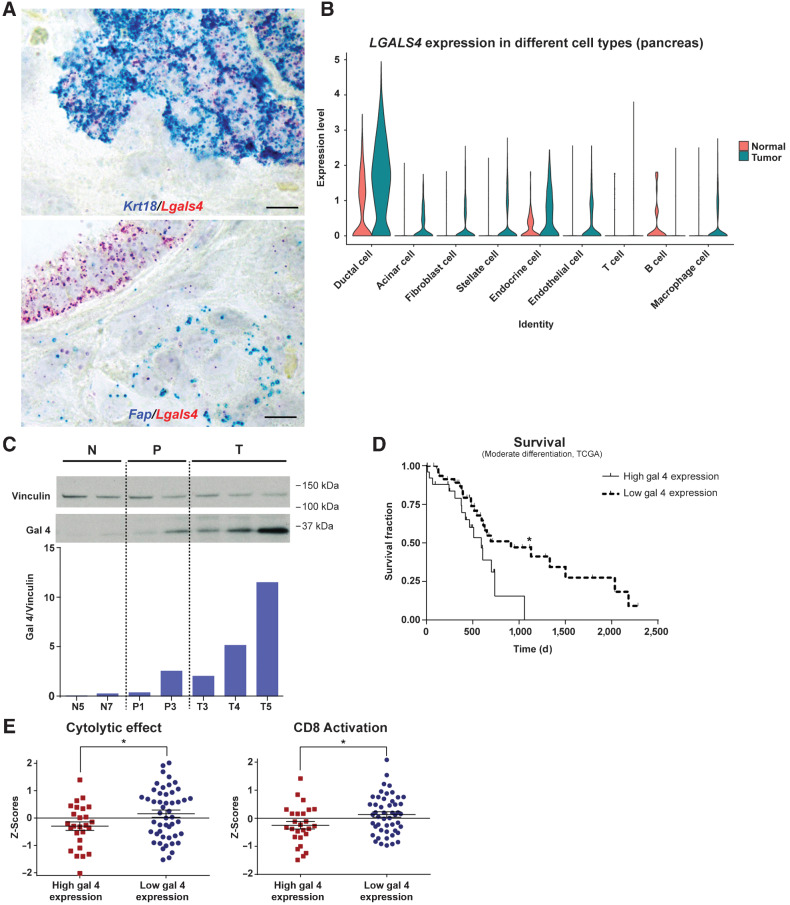Figure 2.
Galectin 4 is a cancer cell–derived marker of disease progression and prognosis in pancreatic cancer, with an association to reduced immune activity. A, Representative ISH images of cytokeratin 18 (Krt18, blue, top image) and fibroblast activation protein alpha (Fap, blue, the bottom image), together with gal 4 (Lgals4, in red), in mouse model of PDAC tumor tissue. 4 tumors analyzed in total; scale bar, 10 μm. B, Violin plot of single-cell RNA-seq data from Peng et al. (40) showing LGALS4 expression in cell types from human PDAC tumors. C, Western blot and quantification (semiquantitative) of gal 4 protein in normal murine ductal organoid (N, two different cell lines), PanIN organoid (P, two different cell lines), and tumor organoid (T, three different cell lines) cell lines. Vinculin was used as loading control. D, Kaplan–Meier survival curve adapted from the TCGA data set (26), with patients grouped into high (n = 26) and low (n = 49) gal 4 mRNA expression (groups defined in Materials and Methods) and relationship to survival in patients with PDAC with moderately differentiated tumors. *, Significance (P = 0.0254) calculated using the Mantel–Cox test. E, Z-score comparison of high (n = 26) and low (n = 49) gal 4-expressing tumors within the group of moderately differentiated PDAC tumors in the TCGA data set. Genes associated with cytolytic effect of immune cells analyzed in the left graph (P = 0.036), and CD8 activation scores analyzed in the right graph (P = 0.0253). Genes used for CD8 activation and cytolytic effect are listed in Supplementary Table S2. *, Indicates significance calculated using an unpaired t test. Error bar indicates mean ± SEM.

